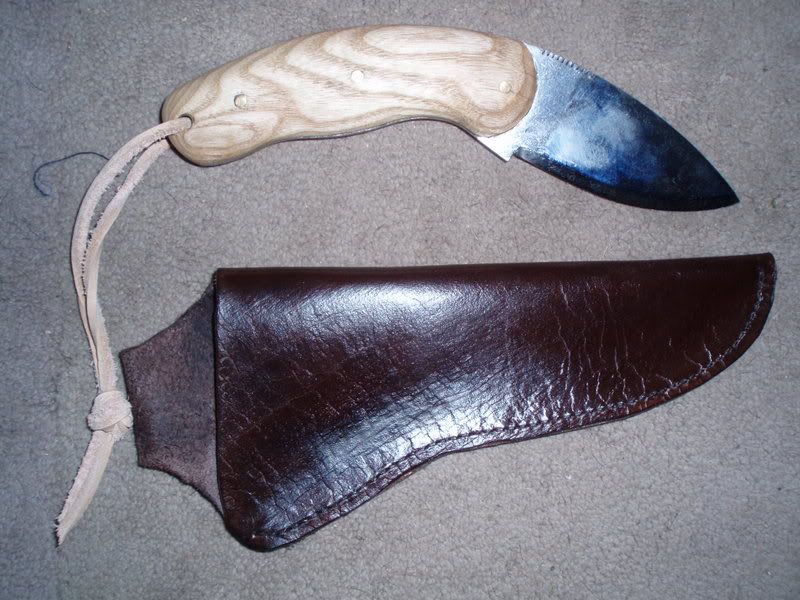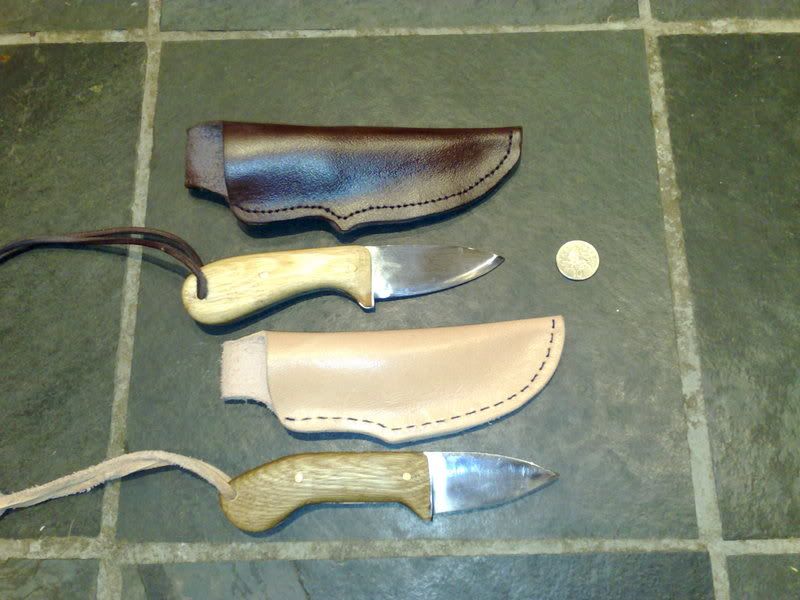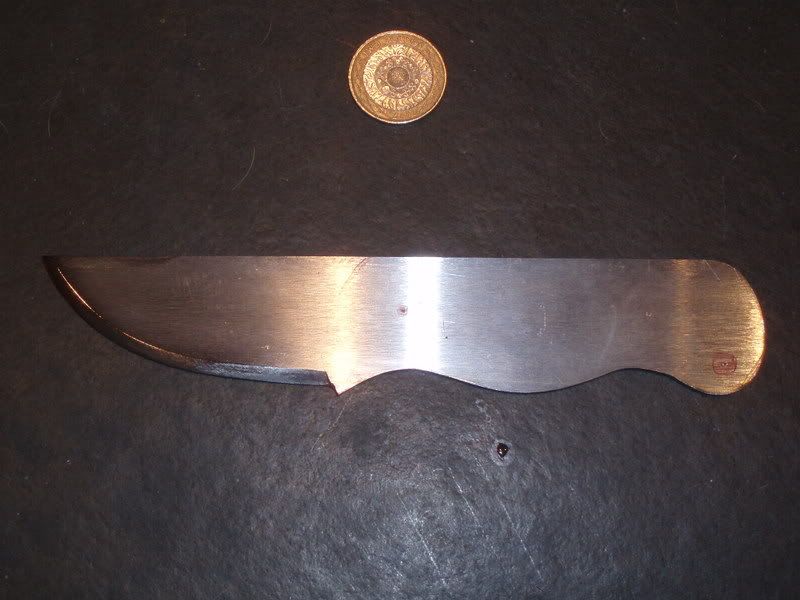Hi Folks,
I thought I'd share some of the knives that I have made.

Mrs nicked this one






Unfortunately this last one snapped when I tried to straighten it after forging, mind you, it was only 3mm thick.
They have all been made using 01 flatstock, forged & hardened by my own hand. I regularly use one for skinning when I'm out shooting.
Cheers
Dave
I thought I'd share some of the knives that I have made.

Mrs nicked this one






Unfortunately this last one snapped when I tried to straighten it after forging, mind you, it was only 3mm thick.
They have all been made using 01 flatstock, forged & hardened by my own hand. I regularly use one for skinning when I'm out shooting.
Cheers
Dave

